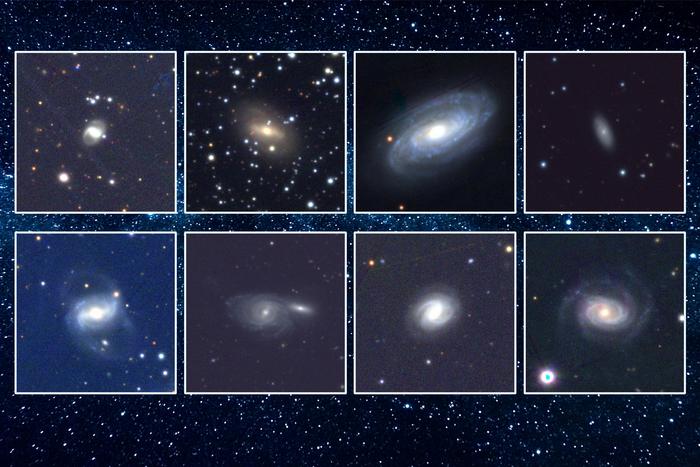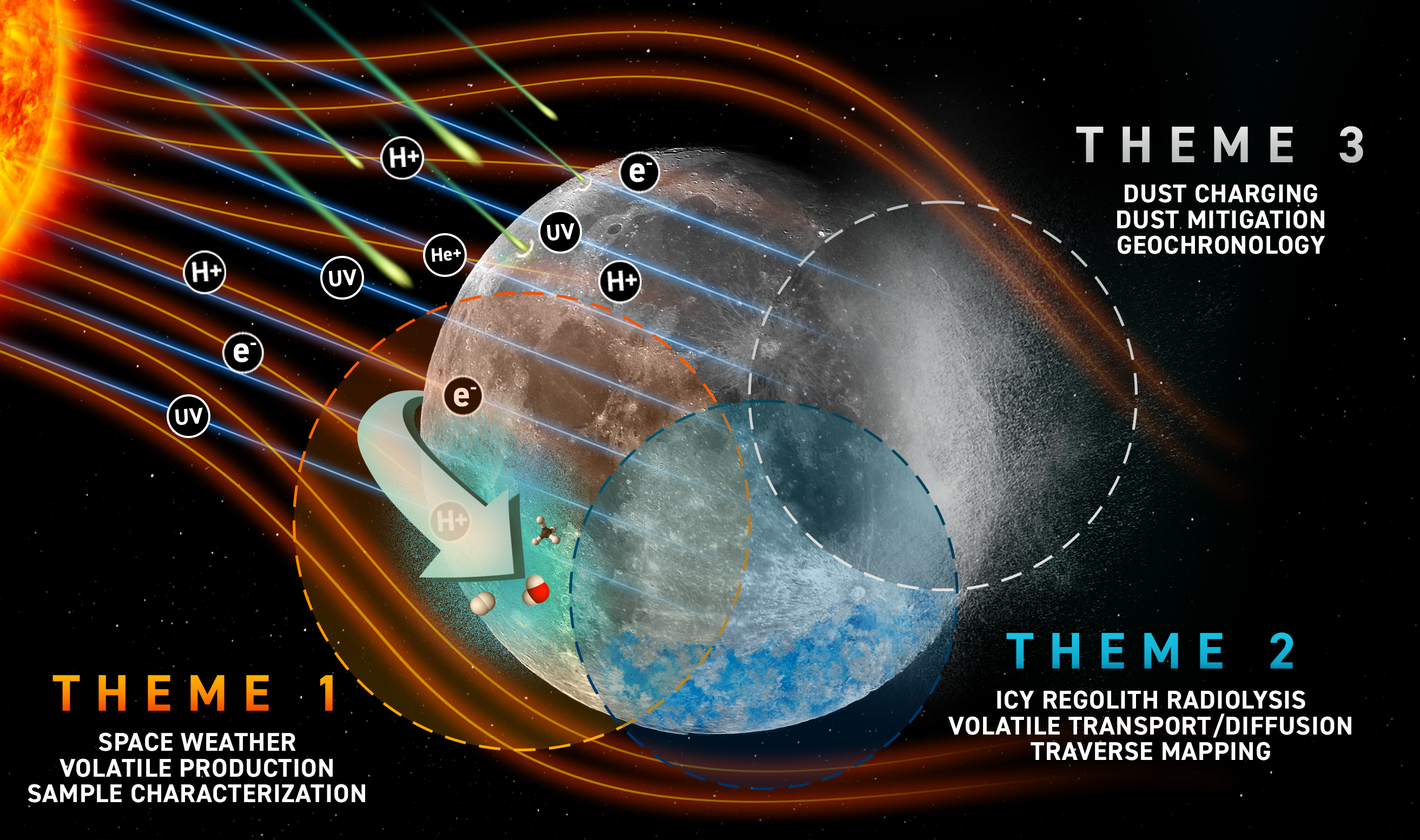Lawrence Livermore National Laboratory (LLNL) scientists recently received and will analyze samples from the asteroid Bennu that will help explain how it formed and where it came from.
Tag: Space
XL-Calibur telescope launched to study black holes
Scientists from Washington University in St. Louis have launched a balloon-borne telescope to unlock the secrets of astrophysical black holes and neutron stars, some of the most extreme objects in the universe. The device known as XL-Calibur was launched from the Swedish Space Corporation’s Esrange Space Center, situated north of the Arctic Circle near Kiruna, Sweden, July 9.
NASA’s Roman Space Telescope Could Help Researchers Detect the Universe’s First Stars
The universe’s earliest stars, known as Population III stars, are notoriously hard to detect with even our most powerful observatories due to their great distance and short lifetime.
First year of DESI results unveil new clues about dark energy
Researchers at The Ohio State University played a major role in analyzing the first year of data from the Dark Energy Spectroscopic Instrument’s survey into the history of the universe.

Hubble Celebrates 34th Anniversary with a Look at the Little Dumbbell Nebula
To celebrate Hubble’s 34th launch anniversary, NASA released the telescope’s new observation of the Little Dumbbell Nebula. Also known as Messier 76, or M76, it is composed of a ring, seen edge-on as the central bar structure, where a central red giant star burned out, and two lobes of gas and dust that are on either opening of the ring.
FAU Engineering Selected by NASA for University Nanosatellite Program
Florida Atlantic University’s College of Engineering and Computer Science is among eight university teams in the United States selected to work with NASA and the U.S. military to foster innovation and expertise in the small satellite sector.
First Results from DESI Make the Most Precise Measurement of Our Expanding Universe
Researchers have used the Dark Energy Spectroscopic Instrument to make the largest 3D map of our universe and world-leading measurements of dark energy, the mysterious cause of its accelerating expansion
Northern Arizona U. astronomer, “eclipse chaser” available to comment on April 8 total solar eclipse
In advance of the rare total solar eclipse coming on Monday, April 8, Northern Arizona University astronomer and “eclipse chaser” Cristina Thomas is available for comment. Thomas can share insights on: How solar eclipses work When and where this eclipse…
Condor Telescope Reveals a New World for Astrophysicists
A new telescope called the “Condor Array Telescope” may open up a new world of the very-low-brightness Universe for astrophysicists.
Missouri S&T spacecraft engineering experts available for comment
Spacecraft engineering experts from Missouri University of Science and Technology are available to discuss the first U.S. spacecraft successfully landing on the moon in over five decades. Dr. Hank Pernicka, Curators’ Distinguished Teaching Professor of aerospace engineering, has been a…
GW Experts Available: First U.S. Spacecraft to Land on the Moon in Decades
WASHINGTON (February 23, 2024) – “The moon’s newest arrival was said to be “alive and well” a day after making the first U.S. landing in half a century, but flight controllers were still trying to get a better handle on its bearings.…
SETI institute employs SETI ellipsoid technique for searching for signals from distant civilizations
In a paper published in the Astronomical Journal, a team of researchers from the SETI Institute, Berkeley SETI Research Center and the University of Washington reported an exciting development for the field of astrophysics and the search for extraterrestrial intelligence (SETI), using observations from the Transiting Exoplanet Survey Satellite (TESS) mission to monitor the SETI Ellipsoid, a method for identifying potential signals from advanced civilizations in the cosmos.
Why studying astronauts’ microbiomes is crucial to ensure deep space mission success
Space exploration is a complex and risky mission that requires careful preparation and a thorough understanding of the challenges inherent to life in space

Astronomers spot 18 black holes gobbling up nearby stars
The detections more than double the number of known tidal disruption events in the nearby universe.
UC Irvine-led team unravels mysteries of planet formation, evolution in distant solar system
Irvine, Calif., Jan. 29, 2024 – A recently discovered solar system with six confirmed exoplanets and a possible seventh is boosting astronomers’ knowledge of planet formation and evolution.
New research shows quasars can be buried in their host galaxies
Quasars can be obscured by dense clouds of gas and dust in their host galaxies, not just by donut-shaped rings of dust in the close vicinity of the black hole.
Exploding stars
Search for witnesses of near-Earth astrophysical events
Dr. Jennifer Lotz Appointed Space Telescope Science Institute Director
The Association of Universities for Research in Astronomy (AURA) is pleased to announce the appointment of Dr. Jennifer Lotz as the Director of the Space Telescope Science Institute (STScI). Dr. Lotz will begin her five-year appointment as STScI Director starting February 12, 2024.
Deep learning speeds up galactic calculations
A new way to simulate supernovae may help shed light on our cosmic origins
NASA’s Webb Makes First Detection of Heavy Element from Star Merger
Using Webb’s spectacular sensitivity, scientists captured the first mid-infrared spectrum from space of a kilonova, which marked Webb’s first direct look at an individual heavy element from such an event.

Engineer developing laser system to defend space assets from debris in Earth’s orbit
If West Virginia University research pays off, debris that litters the planet’s orbit and poses a threat to spacecraft and satellites could get nudged off potential collision courses by a coordinated network of space lasers.
Listening to the Radio on the Far Side of the Moon
Researchers can use the radio-quiet far side of the moon to listen for a never-before-heard signal from the “Dark Ages” of the universe. The LuSEE-Night experiment will act as a pathfinder for future experiments, testing equipment and techniques in the harsh lunar environment.
Engineered compound shows promise in preventing bone loss in space
Mice treated aboard the International Space Station showed significantly reduced bone loss
Increasing national security with satellites that team together
Sandia National Laboratories has been working on an autonomy project led by the Air Force Research Laboratory that could improve the nation’s ability to conduct national security missions, including intelligence, surveillance, reconnaissance, climate monitoring and emergency response.
Tough memory device aims for space missions
Among the many hazards encountered by space probes, exposure to radiation and huge temperature swings pose particular challenges for their electronic circuits. Now KAUST researchers have invented the first ever flash memory device made from gallium oxide, a material that can withstand these harsh conditions far better than conventional electronics.

New research points to possible seasonal climate patterns on early Mars
New observations of mud cracks made by the Curiosity Rover show that high-frequency, wet-dry cycling occurred in early Martian surface environments, indicating that the red planet may have once seen seasonal weather patterns or even flash floods.
Astronomers Reveal New Features of Galactic Black Holes
An international team of scientists, including UNLV astrophysicist Bing Zhang, reports in the July 26 issue of Nature a dedicated observational campaign on the Galactic microquasar dubbed GRS 1915+105. The team revealed features of a microquasar system that have never before been seen.
When the First Stars Turned On: The Origins of the Universe
All stories start somewhere – even the incomprehensibly vast expanse above us has a beginning. Scientists have long studied the cosmos, searching for answers to the “how’s” and “why’s” of life, and that effort continues to this day. From concepts such as ‘Cosmic Dawn’ and ‘redshift,’ UNLV astronomer and computer scientist Paul La Plante focuses on topics that improve our understanding of where it all began.
DESI Early Data Release Holds Nearly Two Million Objects
The universe is big, and it’s getting bigger. To study dark energy, the mysterious force behind the accelerating expansion of our universe, scientists are using the Dark Energy Spectroscopic Instrument (DESI) to map more than 40 million galaxies, quasars, and stars. Today, the collaboration publicly released its first batch of data, with nearly 2 million objects for researchers to explore.
UC San Diego First to Test Cancer Drugs in Space Using Private Astronaut Mission
The latest space experiments from UC San Diego and Axiom Space will explore therapies for breast and colorectal cancer aboard the ISS, and monitor astronauts’ stem cell health over time.

Georgia Tech to Lead NASA Center on Lunar Research and Exploration
Georgia Tech researchers have been selected by NASA to lead a $7.5 million center that will study the lunar environment, and explore the generation and properties of volatiles and dust.
WFIRM bioprinting research makes history when it soars to the ISS
The Wake Forest Institute for Regenerative Medicine (WFIRM) will make history this month when the first bioprinted solid tissue constructs soar to the International Space Station (ISS) on board the next all private astronaut mission by commercial space leader Axiom Space.
Defying (micro)gravity
As part of its “Moon to Mars” initiative, NASA plans to send humans farther into space than ever before.
Pioneering research sheds new light on the origins and composition of planet Mars
A new study has uncovered intriguing insights into the liquid core at the centre of Mars, furthering understanding of the planet’s formation and evolution.
JWST confirms giant planet atmospheres vary widely
An international team of astronomers has found the atmospheric compositions of giant planets out in the galaxy do not fit our own solar system trend.
Tokyo space enthusiasts remotely control Adelaide rovers
Young Japanese space enthusiasts will take part in a space rover experience at the University of Adelaide, without ever stepping on a plane.
‘Terminator zones’ on distant planets could harbor life, UC Irvine astronomers say
In a new study, University of California, Irvine astronomers describe how extraterrestrial life has the potential to exist on distant exoplanets inside a special area called the “terminator zone,” which is a ring on planets that have one side that always faces its star and one side that is always dark.

Heart Tissue Heads to Space to Aid Research on Aging and Impact of Long Spaceflights
Johns Hopkins Medicine researchers are collaborating with NASA to send human heart “tissue-on-a-chip” specimens into space as early as March. The project is designed to monitor the tissue for changes in heart muscle cells’ mitochondria (their power supply) and ability to contract in low-gravity conditions.
Out-of-this-world salad created for astronauts
An international team of scientists has created a salad that contains ingredients that could be grown on spacecraft and provide optimum nutrition for astronauts heading into deep space.

UC San Diego’s Astrobiotechnology Hub to Drive Drug Discovery in Space
UC San Diego’s new Astrobiotechnology Hub brings together leaders in academia, biotechnology and aerospace industries under a united mission to advance stem cell science and commercialization in space.
Galactic explosion offers astrophysicists new insight into the cosmos
Using data from the James Webb Space Telescope’s first year of interstellar observation, an international team of researchers was able to serendipitously view an exploding supernova in a faraway spiral galaxy.
Newly discovered form of salty ice could exist on surface of extraterrestrial moons
Scientists suspect that the red streaks crossing the surface of Jupiter’s moon Europa is a frozen mixture of water and salts, but its chemical signature matches no known substance on Earth. Now researchers have discovered a new type of solid crystal that forms when water and table salt combine in cold, pressurized conditions. Researchers believe the new substance created in a lab on Earth could form at the surface and bottom of these worlds’ deep oceans.
CDI, Axiom Space Sign Agreement to Pursue Science – In Space
Hackensack Meridian science institute, commercial space leader to work together beyond our atmosphere for clues to better protect human health
Cornell-led telescope project completion in sight
The construction of the Fred Young Submillimeter Telescope (FYST) being developed by CCAT Observatory Inc., an international consortium of universities led by Cornell, is drawing to a close.
Sudden Spin-down Event Illuminates Magnetar Mystery
A new paper published in Nature Astronomy is shedding light on magnetars, whose attributes remain poorly understood. A magnetar is a type of neutron star with an extremely strong magnetic field that rotates once every two to ten seconds. Researchers…

The Latest From The American Astronomical Society Meeting And Other Space News
Below are some of the latest articles that have been added to the Space and Astronomy channel on Newswise, a free source for journalists.
SPIDER launches from Antarctica
A team of scientists including physicist Johanna Nagy at Washington University in St. Louis successfully launched a balloon-borne experiment studying the early universe on Dec. 21. The instrument, called SPIDER, was carried aloft by a scientific balloon from its launch pad in Antarctica.
Space and time: Clocks to detect dark matter
Researchers have proposed a plan to send two atomic clocks deep into space to search for ultralight dark matter, with the goal of better understanding the universe.
Microbial miners could help humans colonize the moon and Mars
The biochemical process by which cyanobacteria acquire nutrients from rocks in Chile’s Atacama Desert has inspired engineers at the University of California, Irvine to think of new ways microbes might help humans build colonies on the moon and Mars.
Inexpensive Airborne Testbeds Could Study Hypersonic Technologies
Researchers at the Georgia Institute of Technology are envisioning a larger mission for for small satellites known as CubeSats — as airborne testbeds for technologies that are being developed for future generations of hypersonic vehicles.